Royal poodle: color variations, personality traits and training
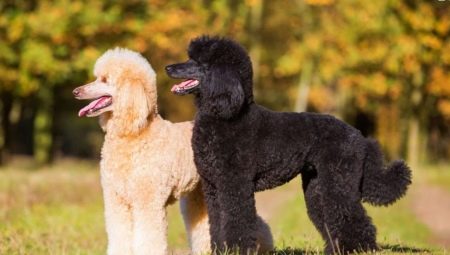
The royal poodle is the largest animal among its breeds. Aristocratic beauty and article, it fully lives up to the title. This breed has always been loved and kept by representatives of the bohemia, from Charlemagne to Churchill. The royal poodle is one of the smartest dogs in the world.
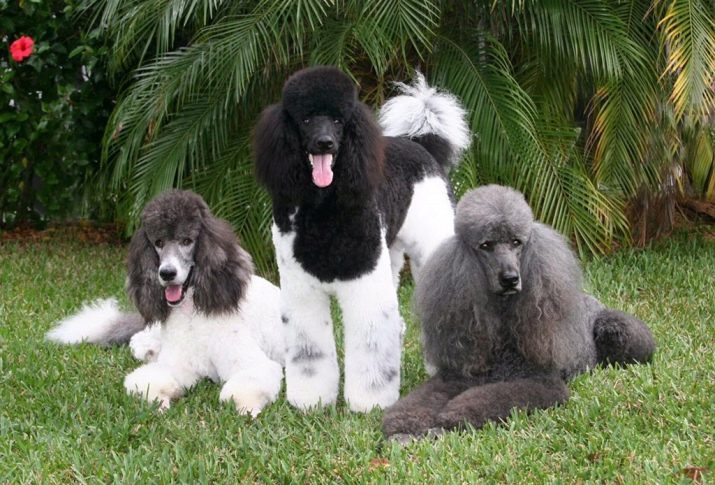
Origin story
The International Association of Cynological Federations (FCI) recognized the breeding of the decorative royal poodle for France, although Germany also declared its involvement in the creation of the breed. In German, the name of the species is pronounced as "waterfowl". France considers royal poodles to be the national breed of their country.
The roots of the population of these dogs go so deep into history that today it is difficult to say with certainty on whose land these amazing animals appeared.Roman and Greek antique coins dating back to the first century BC have been found, and portraits of dogs, reminiscent of modern poodles, were minted on them. But France won its argument thanks to a 12th-century painter who painted a poodle on the wall of a French church in Reims.
The first scientific description of the breed was made by the Swiss biologist K. Gesner in the middle of the 16th century. In the same century, G. Forer described all varieties of poodles: multicolored, large and dwarf.
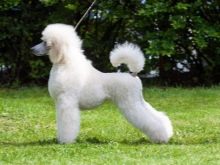
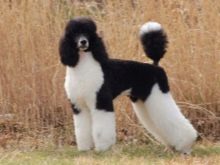
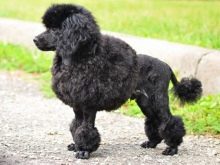
Cynologists still do not come to a consensus on what types of dogs were involved in the formation of the royal poodle breed. Some believe that it occurred as a result of the mixing of the German Sheep Poodle and the Spanish Water Dog. Others attribute kinship to commanders, cops, French mermen, barbets, and Irish spaniels.
There is a legend that only monarchs kept royal poodles; attempts to get dogs outside the royal family were punishable by death. But there is evidence that blind beggars used these animals as guides. In addition, dogs performed in circuses, were used by hunters to retrieve shot game from reservoirs. During World War II, poodles found wounded, found mines, pulled a telephone cable and guarded the military.
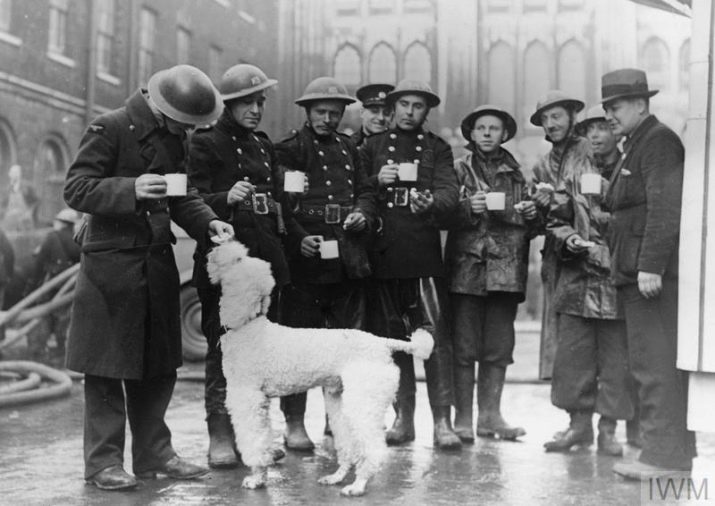
Description
The royal poodle looks like a large dog with a beautiful strong build. It weighs 23-30 kg. According to the standard, her height at the withers is 45–60 cm. Shearing of wool or lacing is allowed. The second option is rarely used.
In accordance with the accepted standards, the royal poodle has the following external data.
- The head is straight, proportional, with a slightly enlarged occipital part. The forehead is of standard size, imperceptibly merging into the face of the animal.
- Lips of moderate thickness, dense, well defined.
- Slender, without gaps, a row of white teeth of medium size, with a scissor bite.
- The shade of the nose is black or matches the color of the coat. The tip of the nose is wide and mobile.
- Small, straight-set, almond-shaped eyes, with a dark brown iris.
- The soft cartilage of the ears allows them to hang down along the head, fitting snugly against it. When the poodle listens, the elastic, slightly rounded ears become mobile.
- The neck is of moderate length, well arched towards the withers.
- The skin is even, smooth, has no folds.
- A proportional harmonious body with well-developed muscles.
- The ribcage is oval in shape.
- A straight back with sloping shoulder blades ends with a slightly rounded croup.
- The tucked up belly and groin form the elegant silhouette of the dog.
- Smooth limbs are endowed with rounded, tightly compressed fingers.
- The tail set high is natural or half docked. The standard allows for a perfect tail line, without kinks or seals.
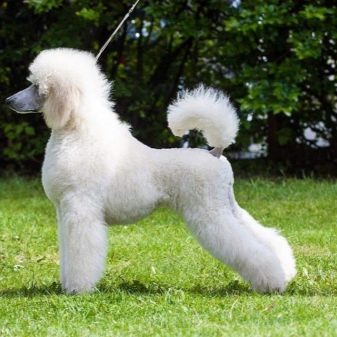
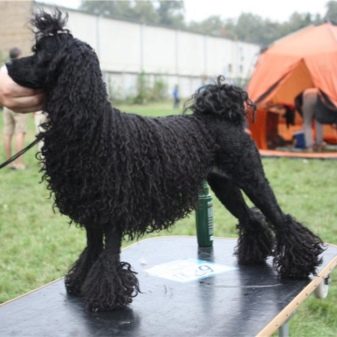
Character
The royal poodle has an interesting, slightly controversial personality. He is infinitely attached to his master, but this dog knows how to subtly feel the falsehood. With an insincere, indifferent attitude towards himself, he can show a wayward character. He will not obey and carry out commands, although he perfectly understands what they want from him.
If the owner doesn't like his pet, the poodle's loyalty will be limitless.... He will adapt to any temperament of the owner with any rhythm of life, will become the most comfortable and obedient dog.
He will run in the morning with an athlete host, and lie down next to him with pleasure on the couch.
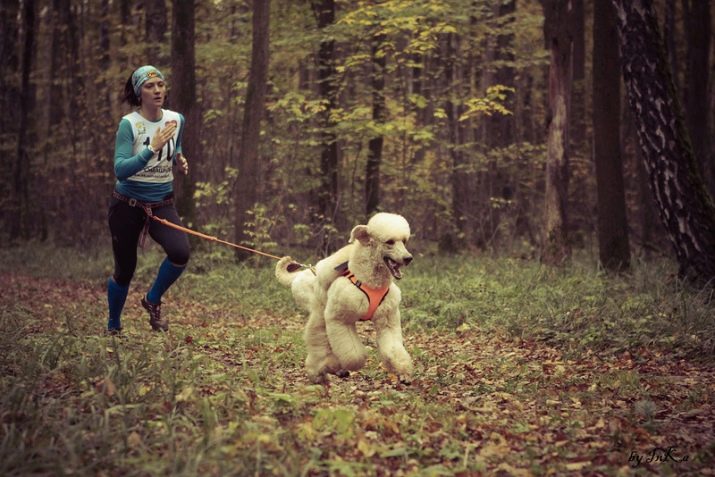
If the poodle is led by a lonely person, he will never be bored. This breed ranks second in intelligence (after the border collie) among all dogs on the planet. She memorizes and takes note of more than two hundred words and many gestures. Communicating with his pet, the owner will always be sure that he is understood.
The versatile character of the dog is ideal for large families with children. The poodle will get along with everyone from toddlers to old people.By its nature, the dog is quite active, it will gladly play with children. With the same passion, the poodle will be worn with other pets, if they are in the family, he is very sociable and will definitely love them.
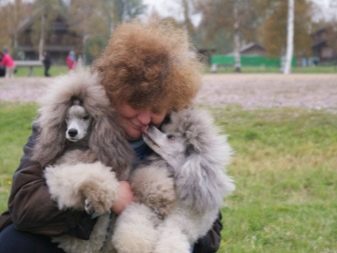
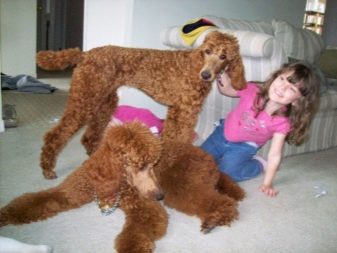
High intelligence and energy force the poodle to constantly explore the world and learn something new. For such dogs, training is very important, and the more the animal is loaded with ingenious tasks and mobile exercises, the more pleasant it is. But learning should begin with obedience. If this is not done, an intelligent, playful and wayward dog can show his character. For example, if the animal does not walk, it will throw out the energy of the house, smashing something along the way.
With an adult poodle, you need to walk two or three times a day, and with puppies even more often, while changing places of walking. Diversity influences the formation of their intelligence.
The royal poodle is good-natured and aristocratic, but he has one slight addiction - to bark for no reason. This shortcoming is removed by timely and correct education.

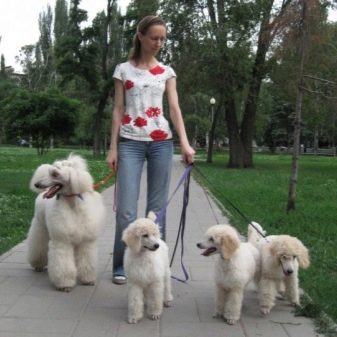
Life span
The royal poodle is considered a long-liver, with an average life span of about 17 years, and even longer in favorable conditions. Good conditions include proper maintenance, balanced nutrition, active walks, disease prevention and timely treatment if the disease does manifest itself. Having done everything right, we will get a healthy energetic pet, in which even old age comes much later than other dogs, after 13 years.
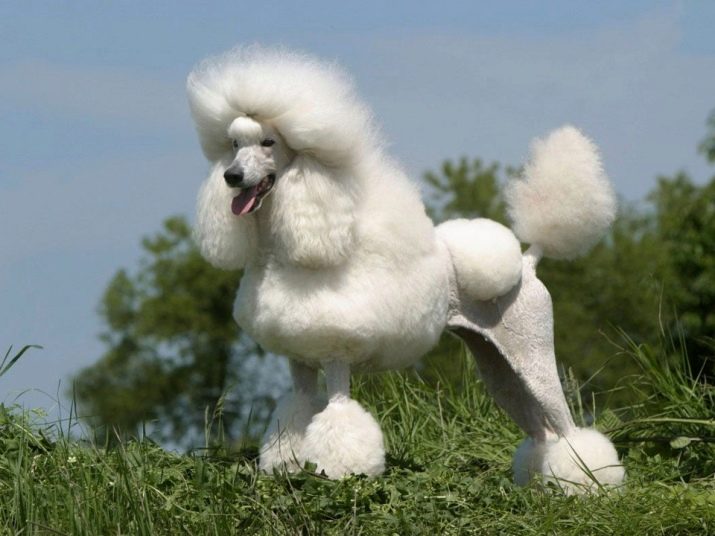
The poodle has good immunity, but there are risks of disease that can compromise its health and affect its lifespan. These include diseases such as:
- lymphadenitis;
- retinal atrophy;
- volvulus;
- diseases of the spine and hip joint;
- congenital deafness;
- epilepsy;
- manifestations of diabetes;
- hypothyroidism;
- food allergy;
- urolithiasis disease;
- problems with the adrenal glands;
- skin dermatitis.
It does not mean at all that the pet should get sick with all of this, but it can still suffer from any of the listed diseases. Poodles are also susceptible to insect bites.
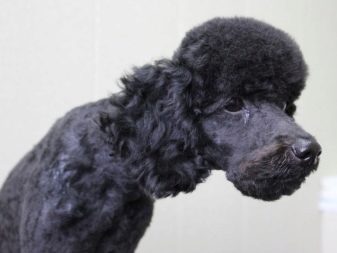
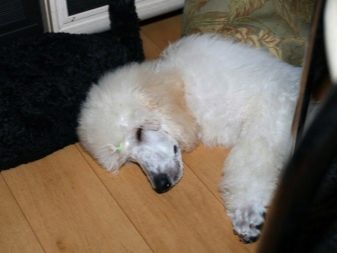
Color options
Poodle fur is worth talking about separately. Its curls are strikingly different from the coat of many dogs and without a haircut they turn into a disorderly knotted ball of fur, although the springy structure protects from the active formation of tangles, as is the case with other long-haired breeds.
It is advisable to cut the dog monthly. If she participates in exhibitions, she will have to wear only standard "hairstyles": Continental, Modern, English Lion, Scandinavian Lion. Puppies are clipped in the style of a pappy clip. An adult dog can be beautifully laced up, but the owners rarely resort to this type of animal design.
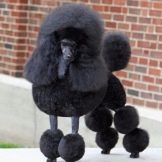
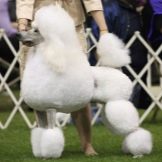
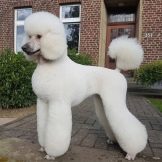
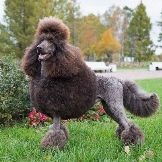
The poodle has a thick, beautiful curly coat that does not shed. So the dog treats to hypoallergenic breeds and is suitable for people with allergies. Although the molting of the animal still passes, but once in a lifetime, at the age of about 9 months, when the adult wool replaces the baby one.
Adults, even not quite old dogs, can turn gray or fade - this property is especially noticeable on dogs with apricot and brown colors. As for the white color, it tends to acquire yellow and gray spots, so the pet's diet should consist of special foods designed to maintain the good condition of the white coat.
The healthy color of the poodle looks uniform, even, in a single shade. The breed is endowed with various tonal possibilities, the color can be:
- black;
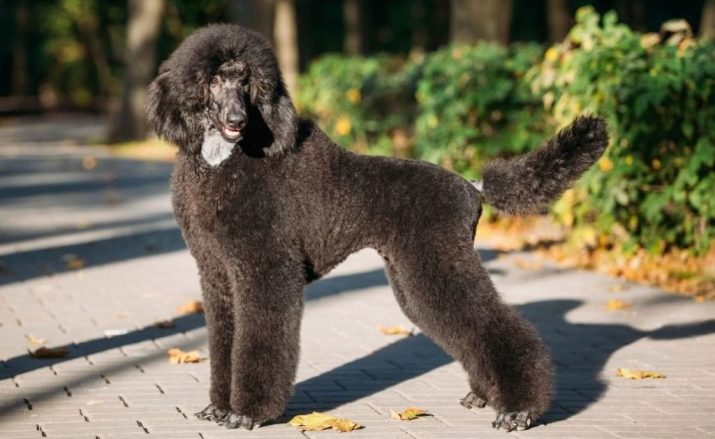
- White;
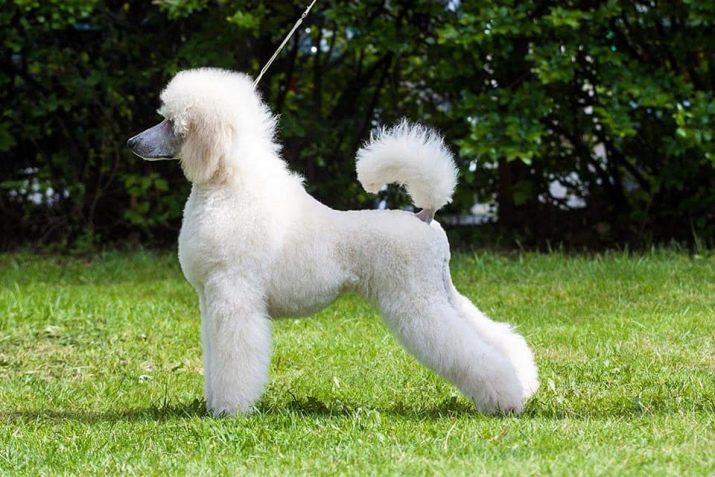
- apricot (red);
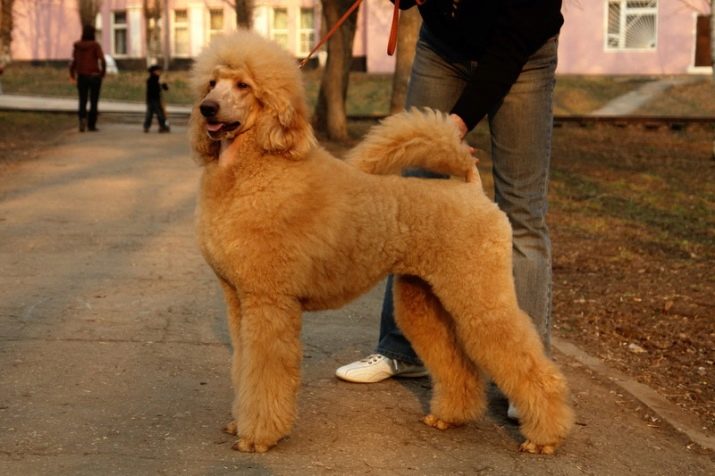
- peach;
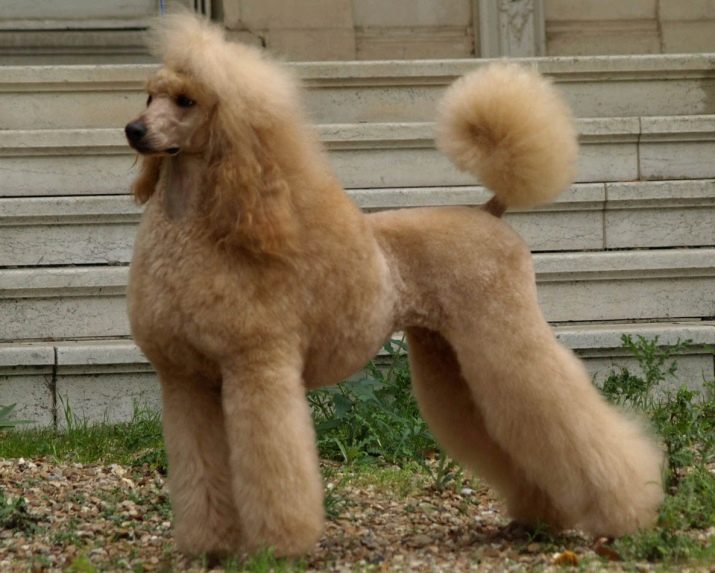
- Brown;
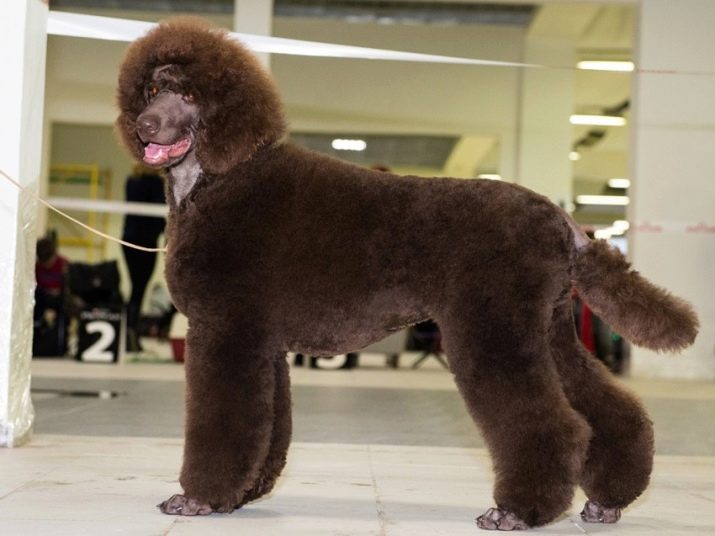
- silver (gray);
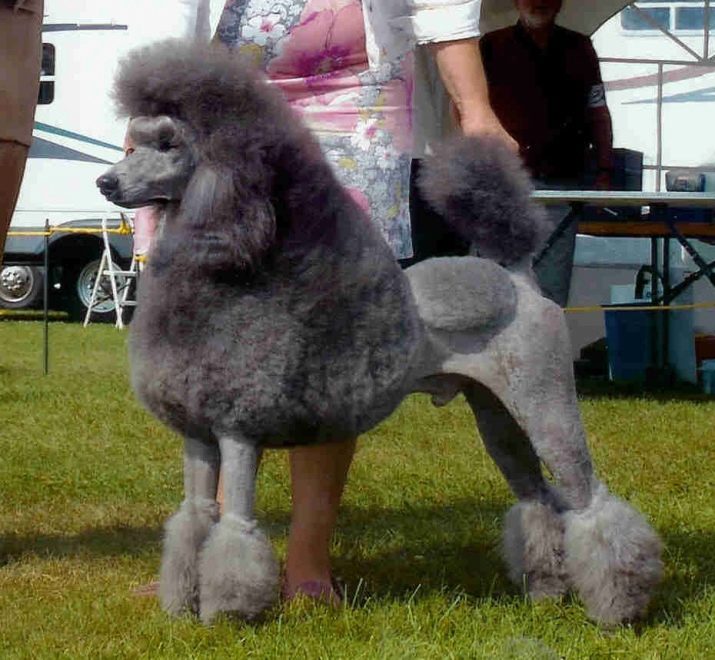
- Red.
In our country, dogs of any color of even tonality are allowed to the exhibitions. Red FCI officially approved relatively recently, in 2007.
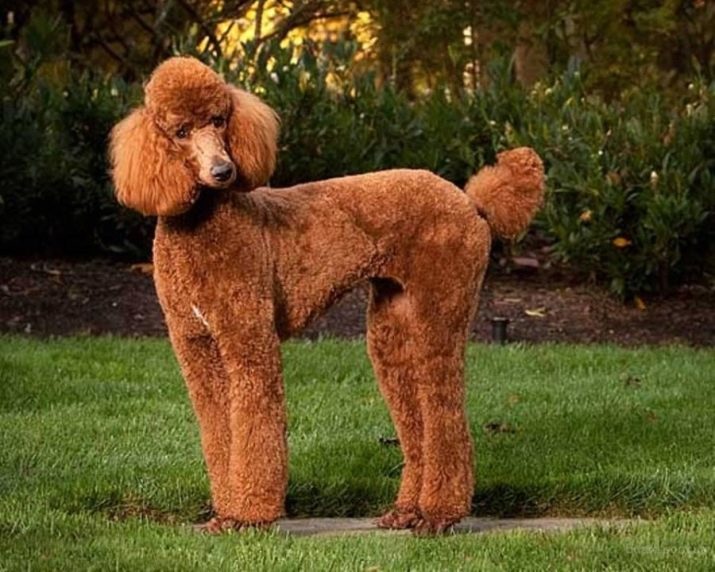
Maintenance and training
It is difficult to look away from a beautifully trimmed, well-groomed, well-mannered poodle. The dog attracts the attention of passers-by on the street and guests of the house, but if the pet is not cut, the enthusiasm will be replaced by rejection of an overgrown brutal ball of wool. The dog will grow long hair not only all over the body, but also on the face, he will not be able to see, and sometimes open his mouth.

How to care
The animal is aristocratic beautiful, but at the same time it is not capricious at all, does not require special care. Particular attention is paid only to the poodle's coat, it must be cut as it grows (once every 1-1.5 months). It is the haircut that emphasizes the royal posture of the animal. In adolescence, when the fur changes from child to adult, you need to brush your pet daily. For an adult dog, it is enough to comb out 1-2 times a week.
A dull and dumped coat can indicate a pet's illness, which means that it should be shown to the veterinarian.
The rest of the care of the poodle is not at all difficult, it consists of the following steps.
- The dog's claws are cut as they grow.
- They bathe once or twice a week, which makes the poodle very happy.
- Brush your teeth periodically.
- Check the condition of the eyes and ears.
- Walking in the morning and in the evening for 1-2 hours. The poodle is active, smart, he needs physical and mental stress.
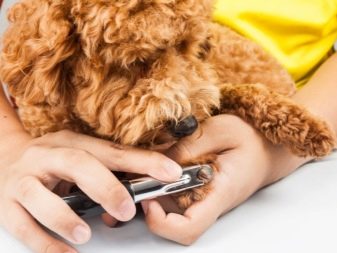
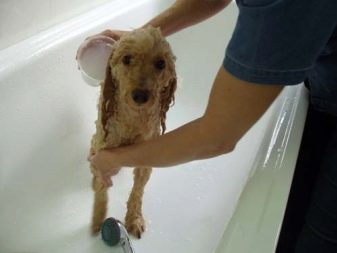
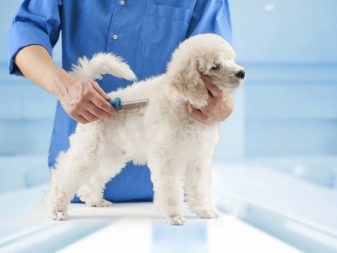
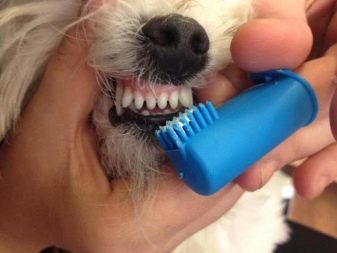
How to train
The dog has good intelligence and is very mobile. He will look forward to studying with him. The poodle is smart, he will feel injustice and toughness right away. In training, the "carrot and stick" method does not suit him, only the "carrot" method. Every success should be praised, stroked and rewarded with a treat. A strict tone in education should be present, but only in the case and without insults. If a naughty dog interrupts classes, you need to lower the pitch and communicate with him in a confident, stern voice, but not break down into screaming and irritation.
Training should begin with obedience skills - as soon as the pet masters them, further training will not be difficult. The dog himself will do his best to please the owner and be proud of his successes. If the pet is cunning and stubborn, it means that the owner has not yet managed to win his trust, you will have to make efforts in communicating with him. The poodle will never refuse an extra opportunity to be with the owner, even at the level of everyday communication.
To get a trained trained dog, they begin to study with him from four months. He should be trained in command and calm behavior during examinations by strangers. This skill will be needed at exhibitions and in communicating with a veterinarian.
Patience and kind attitude towards the pet quickly gives its results.
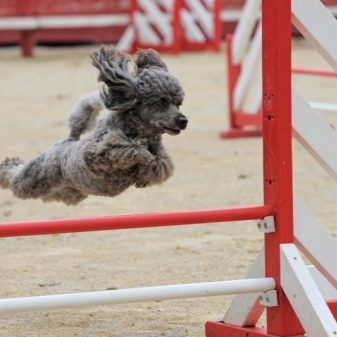

Feeding
The poodle has an excellent appetite, and if you do not take control over its diet, it can be obese. The pet is not immediately accustomed to snacks and treats from the table. It is better to follow the diet and feed the dog at the same time. While feeding the puppy, the portions increase as the puppy grows. The animal can receive natural food or commercial food for medium and large walking dogs. If you feed your pet with natural products, you should follow the recommendations of the breeders.
Meat products in the diet of an adult dog should be 35%, for a puppy - 45%. For an aging dog, the meat menu is limited to 300 g of product per day.
- From offal for poodles, beef tripe, heart and some liver are preferable.
- Several times a week, the meat can be replaced with marine skim fish, which is boiled and bones removed.
- The dog is given porridge: rice, buckwheat, pearl barley, seasoned with vegetable oil.
- To maintain healthy teeth, a raw apple or carrot is offered to the animal a couple of times a week.
- One third of the diet should be boiled and raw vegetables. They are mixed with porridge and meat dishes.
- Puppies are given cottage cheese and other dairy products, fermented milk drinks are allowed in the diet of adult dogs.
If necessary, according to the recommendations of the veterinarian, vitamins and minerals are added to the food.

The poodle is a beautiful intelligent dog. At various times, this breed was bred by such celebrities as Beethoven, Georges Sand, Thomas Mann, Madame de Pompadour, Schopenhauer. Today the royal poodle is chosen by many, it can brighten up someone's loneliness or become a favorite in a large family, suitable for anyone who wants to have an intelligent and devoted friend.
For interesting facts about the royal poodle, see the following video.






































